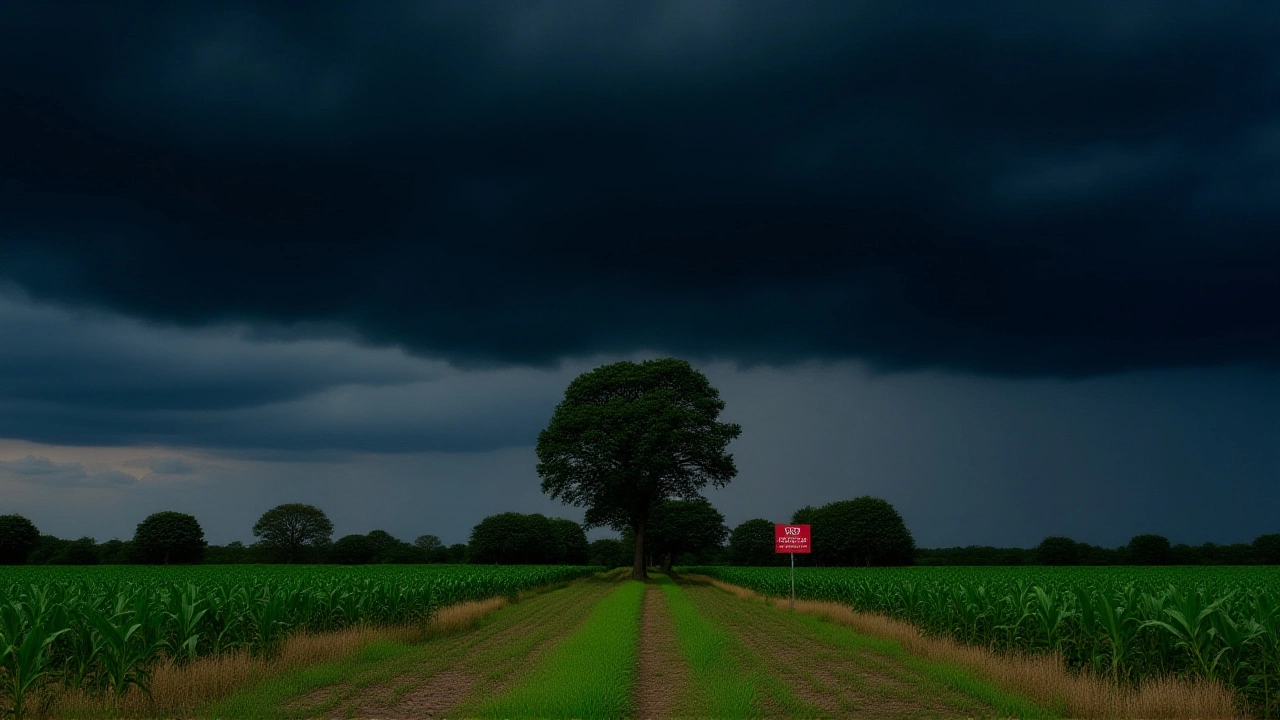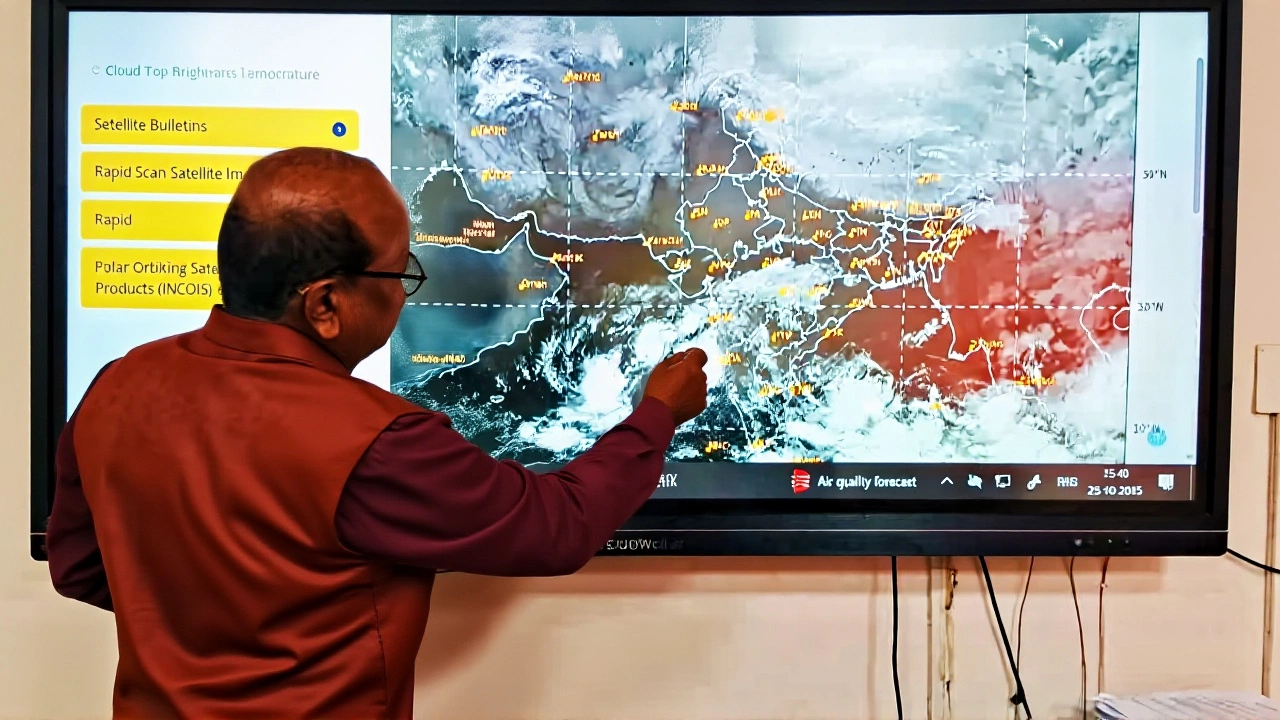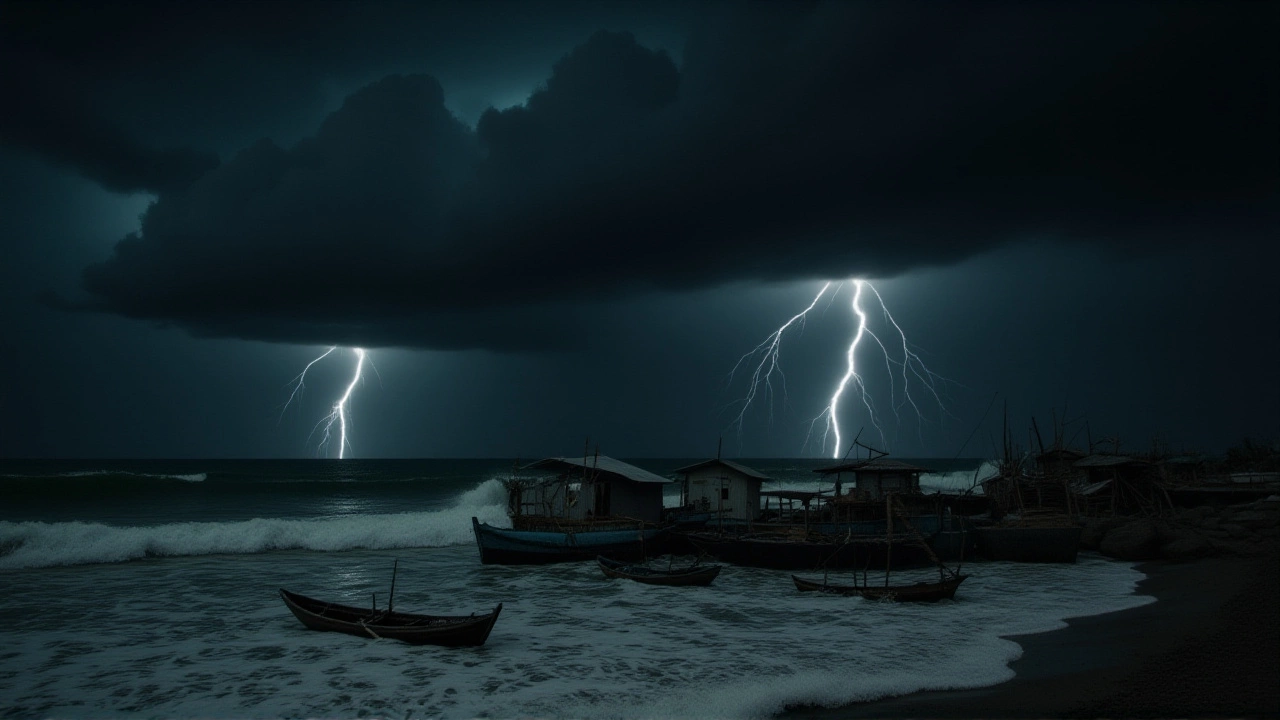When India Meteorological Department (IMD) issued a red alert for Jharkhand, few expected a storm born in the Bay of Bengal to unleash chaos nearly 1,000 kilometers inland. But Cyclone Montha — named by Thailand — isn’t playing by the usual rules. It’s not just hitting the Andhra coast on October 28, 2025; it’s sending shockwaves across central India, turning a routine autumn day into a weather emergency. By evening, the storm’s core will slam into the coast near Kakinada, but its fingers are already gripping Jharkhand with gale-force winds and torrential rain. And for farmers preparing for Chhath Puja on October 31, the timing couldn’t be worse.
How a Bay of Bengal Storm Reached Jharkhand
At 6 a.m. on October 27, IMD reported Cyclone Montha was 520 km east of Chennai, moving northwest at 13 km/h. Its sustained winds? 90 km/h. By 6 p.m. the next day? 110 km/h. That’s not just a storm — it’s a Category 1 cyclone, strong enough to rip roofs off homes and snap power lines. What’s unusual is its trajectory. Most cyclones weaken after landfall. But Montha’s structure is unusually compact, allowing it to retain energy as it pushes inland. By October 28, its outer bands are already drenching parts of Jharkhand. Simdega, usually dry, got just 0.5 mm of rain in 24 hours — a cruel preview of what’s coming.
Red Alerts, Rescue Teams, and a State on Edge
Odisha didn’t wait. The state government activated 128 disaster response teams across eight southern districts — Malkangiri, Koraput, Nabarangpur, Rayagada, Gajapati, Ganjam, Kandhamal, and Kalahandi. National Disaster Response Force (NDRF) deployed 22 teams across Andhra, Odisha, and Jharkhand. In Visakhapatnam, fishing boats remain docked. Fishermen, warned not to go out, huddle in shelters as waves climb over 5 meters. Meanwhile, Andhra’s district collectors are broadcasting evacuation orders through loudspeakers in low-lying areas. In Jharkhand, the state disaster management authority has opened 87 relief centers in Ranchi, Dumka, and Deoghar.
Why Jharkhand Is in the Crosshairs
It’s not just rain. It’s wind. IMD forecasts sustained winds of 40–50 km/h across Jharkhand from October 28 to 31. Gusts could hit 70 km/h — enough to topple trees onto homes, block roads, and snap electricity cables. And with lightning expected in over 15 districts, the danger multiplies. Rural areas, where homes are often made of tin and mud, are especially vulnerable. “We’ve seen cyclones before,” says Dr. Rajesh Singh, a meteorologist at Patna University. “But this one’s different. It’s carrying moisture from the Bay like a freight train — and it’s dumping it all over Jharkhand and Bihar.”

Chhath Puja Under Threat
For millions in Jharkhand and Bihar, October 31 isn’t just another day — it’s Chhath Puja, a sacred Hindu ritual where devotees offer prayers to the sun god at riverbanks at dawn and dusk. But with rain and lightning predicted across the state, families are torn. Do they risk the ritual? Or cancel it? The state government has advised worshippers to avoid open riverbanks during peak rainfall hours (7–10 a.m. and 5–8 p.m.). “We’re not asking people to abandon their faith,” says Jharkhand’s Chief Secretary, Anjali Gupta. “We’re asking them to adapt it. Use covered platforms. Stay dry. Stay safe.”
What’s Next? The Ripple Effect
The storm’s impact won’t end with October 31. Jharkhand’s agriculture sector — already reeling from last year’s drought — could lose up to 30% of its late-season paddy crop. In Bihar, over 200,000 hectares of standing crops are at risk. Even Maharashtra’s Vidarbha region, hundreds of kilometers west, could see unexpected showers between October 28 and 30, disrupting harvests. The NDRF says it’s pre-positioning boats, drones, and medical kits in 12 key districts. “This isn’t a one-day crisis,” says NDRF’s Regional Director, Arvind Mehta. “It’s a five-day marathon of response.”

What the Experts Are Saying
Climate scientists are sounding alarms. “We’re seeing more intense cyclones moving farther inland,” says Dr. Priya Nair, a climatologist at IIT Delhi. “Warmer sea surface temperatures in the Bay of Bengal are fueling stronger systems. Montha isn’t an outlier — it’s a preview.” The IMD’s own data shows a 40% increase in cyclones reaching Category 1 or higher since 2018. And Jharkhand, once considered safe, is now on the radar.
Frequently Asked Questions
How dangerous are the winds expected in Jharkhand?
Jharkhand is bracing for sustained winds of 40–50 km/h, with gusts up to 70 km/h — strong enough to uproot trees, damage tin roofs, and knock down power lines. In rural areas, where homes are often poorly constructed, this poses serious risks. IMD warns that flying debris and falling branches are the leading causes of injury during such storms.
Why is Chhath Puja at risk this year?
Chhath Puja requires worshippers to stand in open riverbanks during early morning and evening hours — exactly when heavy rain and lightning are forecast in Jharkhand and Bihar. Authorities are urging devotees to use covered platforms near rivers and avoid standing in open water. The state has set up 87 temporary shelters near major riverbanks to accommodate those who still wish to perform rituals safely.
What’s being done to protect crops in Jharkhand?
Farmers are being advised to harvest any ripe crops immediately, especially potatoes, mustard, and lentils. The state agriculture department is distributing plastic sheets to cover standing paddy fields and has deployed mobile teams to assess damage. Over 15,000 farmers in Dumka and Pakur districts have already received emergency kits with drainage tools and waterproof covers.
Are schools and offices closed in Jharkhand?
Yes. All government schools and colleges in 12 high-risk districts — including Ranchi, Jamshedpur, and Hazaribagh — are closed from October 28 to 31. Private institutions are following suit. State offices are operating with skeleton staff, and non-essential services are suspended. Emergency personnel, including police and health workers, are on 24/7 duty.
How is this cyclone different from previous ones?
Unlike most cyclones that weaken over land, Montha has maintained its strength farther inland due to unusually warm sea temperatures and low wind shear. Its compact core allows it to retain moisture and energy. It’s also moving slower than average, meaning prolonged rainfall — not just a quick burst. This increases flood risks in areas like Jharkhand that aren’t equipped for such events.
What should residents do if power goes out?
Keep mobile phones charged using power banks. Avoid using candles — use LED lanterns instead. Stay away from flooded roads — even 15 cm of water can sweep away a car. Tune into local radio (FM 102.8 in Ranchi) for updates. The state has set up 24 helplines: dial 1070 for emergency assistance, or 112 for police. Don’t rely on social media — official channels are the only trusted source.
